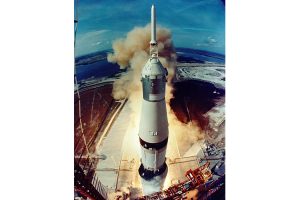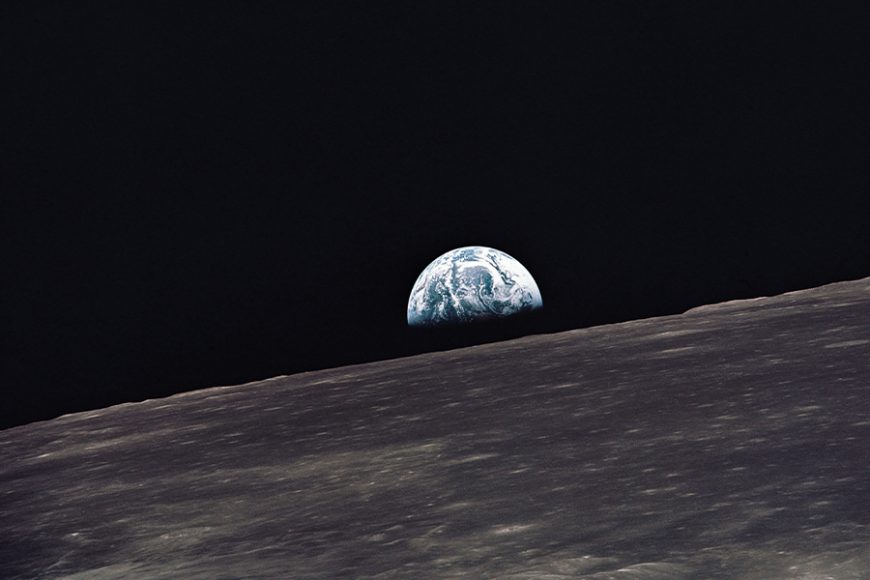“And now the times are changin’
Look at everything that’s come and gone
Sometimes when I play that old six-string
I think about you, wonder what went wrong
Standin’ on your mama’s porch
You told me that it’d last forever
Oh, and when you held my hand
I knew that it was now or never
Those were the best days of my life”
– “Summer of ’69,” by Bryan Adams and James Douglas Vallance.
© Universal Music Publishing Group
It was the “best of times” and “worst of times” — the year of improbable wins for the New York Jets and Mets and Pyrrhic victory on Vietnam’s Hamburger Hill; of a giant leap for mankind on the moon and the death of Camelot on Chappaquiddick Island; of love-ins at Woodstock and riots at Stonewall Inn and a killing at the Rolling Stones concert at Altamont Speedway in California.
It was a year in which a newly inaugurated, controversial president, Richard Nixon, promised to bring us together; Mario Puzo made readers an offer they couldn’t refuse with “The Godfather” and Peter Fonda took to the open road in “Easy Rider.”
What he found at its end was death. Death seemed to be everywhere in 1969, which was also the year of Charles Manson.
These are, for many, mere names and faces in history books 50 years on — shadows and ghosts whose villains can no longer hurt us but whose heroes and antiheroes may inspire us still.
The year is then both another lifetime and a not-so- distant mirror. Perhaps that’s why it transcends its golden jubilee. We want to look back on another polarizing time to console ourselves or is it perhaps to delude ourselves with the notion that things aren’t as bad as they were? Or if they are, then we, too, can survive challenging times.
But there is also a nostalgia for what was many baby boomers’ youth, the so-called “best days of my life,” as singer Bryan Adams put it in his song “Summer of ’69” (albeit in 1984). Even Nixon, who would resign in the tumult of Watergate five years later only to reemerge as an elder statesman, is looking good as we recall his intelligence, political skills and experience and accomplishments in opening up China, funding the war on cancer and starting the Environmental Protection Agency. We remember, too, that when it came time to ask what the president knew and when he knew it, Democrats and Republicans alike in Congress did the right, nonpartisan thing.
Ah, the good old days, yet not always so. In 1969, there was no #MeToo — the women’s movement being in its nascent, bra-burning phase — and LGBTQ? Fuhgeddabout. Indeed, it was the continued harassment and disenfranchisement of gays, lesbians and transvestites that led to the June 28 and 29 riots at the mob-owned Stonewall Inn, a gay bar that was actually a shakedown place. Out of the fire and blood that resulted from a community fed up with mob blackmail and periodic police arrests came the birth of the gay rights movement.
In a sense, Stonewall encapsulated a summer, a year and a decade in which good and evil traveled the same road. Perhaps it is always thus, but in the summer of ’69 that seemed particularly true. On the night of July 18, U.S. Sen. Edward “Ted” Kennedy drove off a bridge on Chappaquiddick Island while escorting Mary Jo Kopechne back to her hotel from a reunion of those who had worked on Sen. Robert F. Kennedy’s presidential campaign the year before. Her death in an accident that Ted Kennedy did not report until a day later — and for which he would receive a suspended sentence for leaving its scene — was viewed as the end, too, of his presidential hopes and the Camelot-like era of glamour and hope that had been ushered in with his brother John’s administration.
And yet, two days after the accident, a promise of that administration — that Americans would put a man on the moon by the end of the decade — was fulfilled when Apollo 11 commander Neil Armstrong and Buzz Aldrin, pilot of the Apollo Lunar Module Eagle, landed on the surface of Earth’s only satellite. Half a billion people watched breathless and spellbound as Armstrong emerged from the lunar module with the words: “That’s one small step for man, one giant leap for mankind.”
Three weeks later on Aug. 8, members of the Manson Family, acting on Charles Manson’s instruction, murdered pregnant actress Sharon Tate and four friends at her home in Los Angeles. A day later, Manson and six cult members murdered supermarket executive Leno LaBianca and his wife, Rosemary. Ultimately, Manson’s drug- addled, middle-class followers would be convicted of nine murders, including two that had been committed in July. He himself was sentenced to life for first-degree murder and conspiracy to commit murder in seven of the deaths. (He died of complications of colon cancer on March 20 of last year.)
Contrast this with the “spark of beauty” as Joni Mitchell described Woodstock, the music festival that was actually held at Max Yasgur’s 600-acre dairy farm in nearby Bethel, New York. More than 400,000 were on hand Aug. 15 through 18 to hear such artists as The Band, The Who, Santana, Richie Havens and Jimi Hendrix. Who will be at Watkins Glen, New York, Aug. 16-18 to hear Miley Cyrus, The Lumineers, Melanie and David Crosby and Friends, among others, perform at “Wood- stock 50”?
No doubt many of the same people who will be at moon events this summer, including “Apollo’s Muse: The Moon in the Age of Photography,” at The Metropolitan Museum of Art July 3 through Sept. 22.
However we mark the 50th anniversary of a terrible, terrific, tumultuous year, one thing is certain: We’ll be partying like it’s 1969.
For more, visit Woodstock.com and metmuseum.org.






